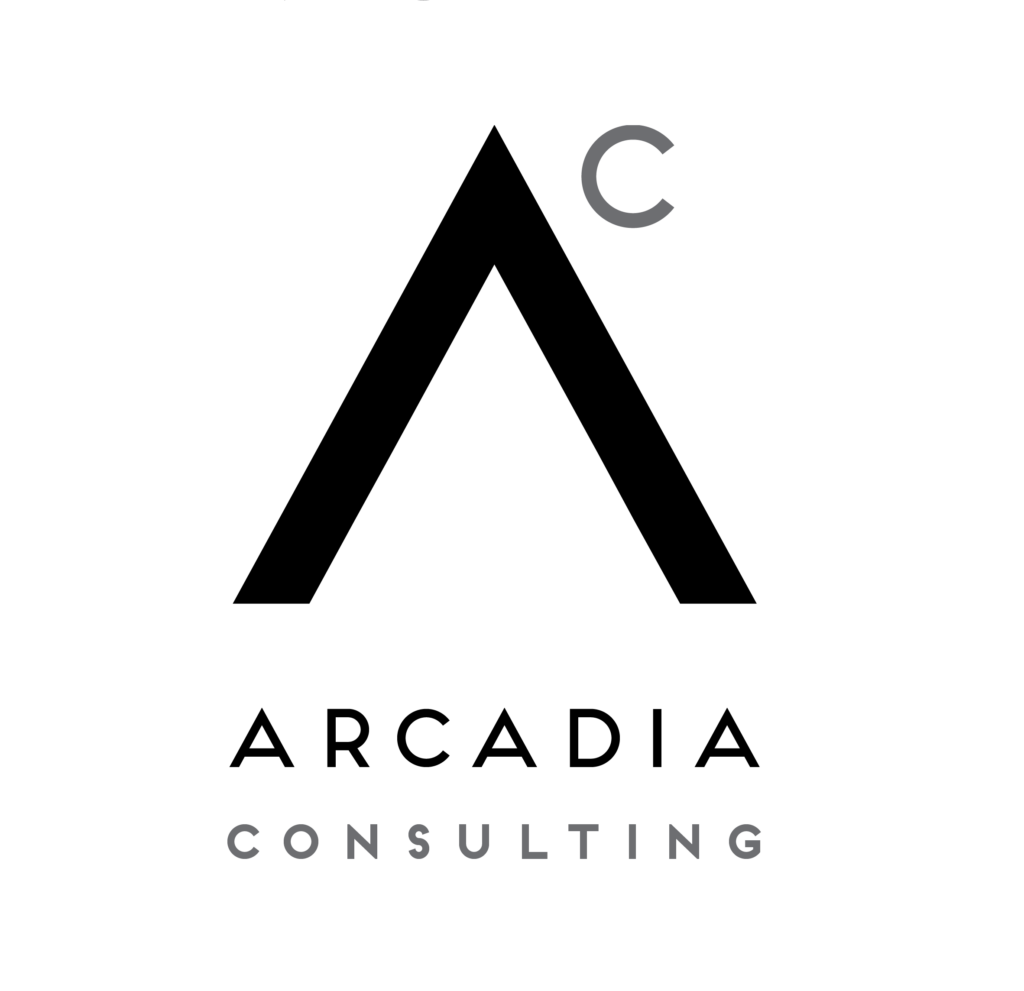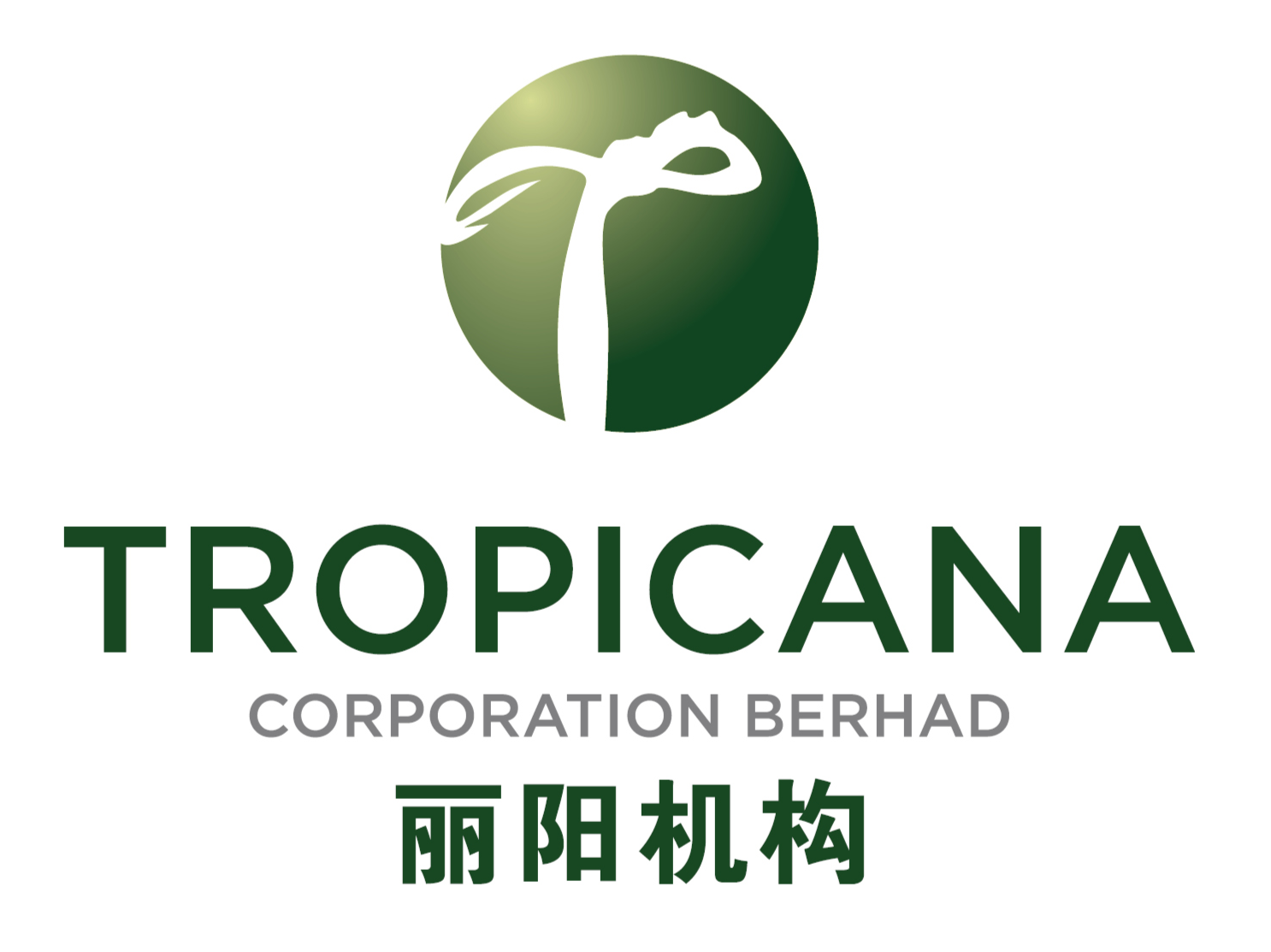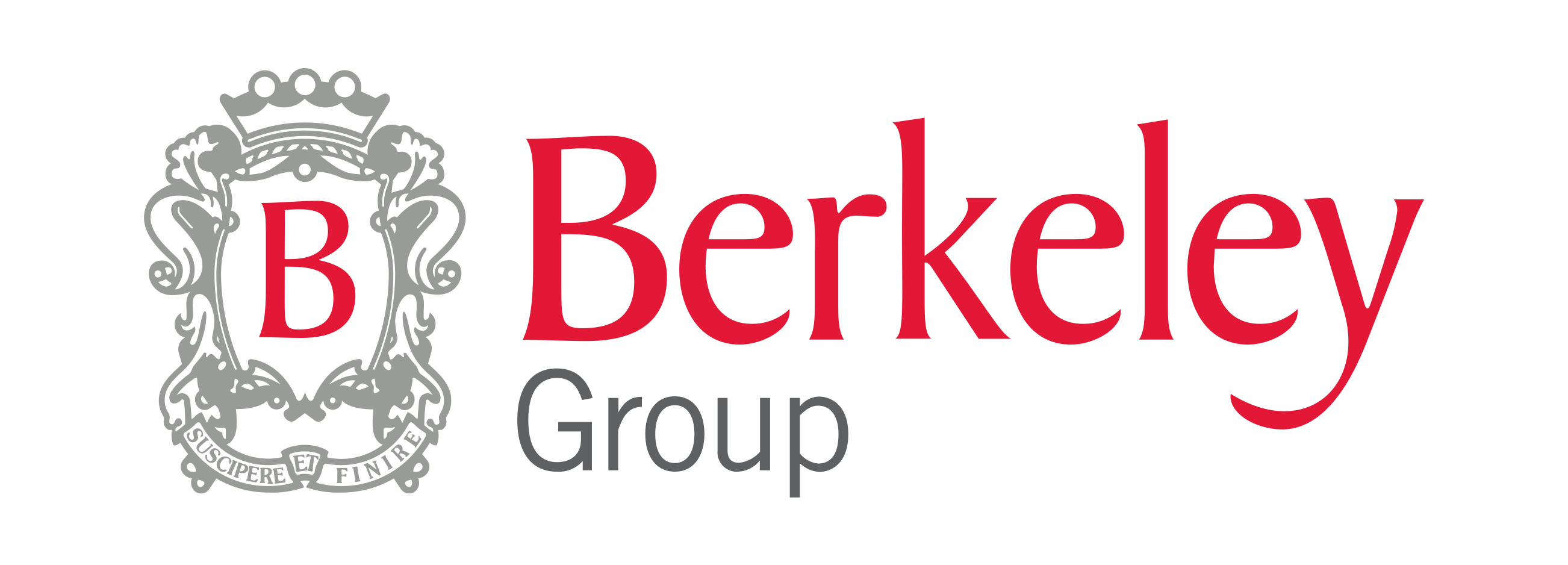REVOLUTIONIZING HANOI CAPITAL CITY: A STRATEGIC VISION FOR THE RED RIVER BANK
Hanoi, the bustling capital of Vietnam, stands on the cusp of a remarkable transformation, with the Red River playing a pivotal role in shaping the city’s vision for 2030 and beyond. In contrast to past isolated developments, this new approach integrates the Red River into Hanoi’s urban fabric, mirroring the way rivers nourish the magnificent cities of Europe. The Red River, central to Hanoi’s geographical and cultural identity, sustains the serene waters of West Lake and Truc Bach Lake, and nurtures traditional craft villages such as Nhat Tan’s peach orchards, Quang An’s kumquat groves, Yen Phu’s ornamental fish farms, Ngu Xa’s bronze casting, and Bat Trang’s ceramics. The river’s journey through ancient neighborhoods with moss-covered roofs and crowded Old Quarter streets contrasts with European-style architectural gems that pay homage to Vietnamese heritage.
The city currently boasts nine strategically placed bridges spanning the Red River, including Thang Long, Chuong Duong, Vinh Tuy 1 and 2, Thanh Tri, Nhat Tan, Vinh Thinh, Long Bien, and Van Lang. Iconic bridges including Long Bien, Thang Long, and Chuong Duong gracefully connect the past with the present, while contemporary counterparts like Vinh Tuy, Thanh Tri, and Nhat Tan signal a promising future. These infrastructures are the lifeblood of Hanoi, essential in fostering connectivity and stimulating economic activity.


The ambitious Transport Planning to 2030, with a vision extending to 2050 and endorsed by the Prime Minister, outlines a comprehensive blueprint for further enhancing this connectivity. This plan includes the construction of nine additional bridges, such as Hong Ha, Me So (part of Ring Road 4), New Thang Long (integrating with Ring Road 3), Tu Lien, Thuong Cat, Ngoc Hoi (aligned with Ring Road 3.5), Tran Hung Dao, Phu Xuyen, and Van Phuc (serving the North-South axis to Vinh Phuc province). This strategic initiative seeks to not only ease current traffic flows but also support the city’s long-term urban and economic growth.
THE FORESIGHTED SYMPHONY OF BRIDGES AND URBAN PLANNING
Hanoi’s forward-looking infrastructure projects, particularly the Tran Hung Dao and Tu Lien bridges, epitomize the city’s commitment to modernization and cohesive urban integration. These bridges are not merely engineering feats but symbols of Hanoi’s evolving identity and aspirations. Imagine Hanoi in 2050, a city where sleek, modern bridges span the Red River, effortlessly linking vibrant urban hubs. Each bridge, from the majestic Tu Lien to the elegant Tran Hung Dao, not only relieves traffic but also represents the city’s progress towards the future.
Tran Hung Dao Bridge: Blending Modernity and Tradition
Scheduled to commence construction in 2025 and complete after two years, the Tran Hung Dao Bridge project envisions a 5.5-kilometer span connecting Hoan Kiem and Hai Ba Trung districts to Long Bien district. With two architectural styles under consideration—a modern cable-stayed design with a low tower and a classic girder bridge with Indochina-inspired details—Tran Hung Dao promises both functionality and aesthetic appeal. This bridge will ease the burden on existing structures and streamline traffic flow, supporting new urban developments while preserving Hanoi’s historic old town.


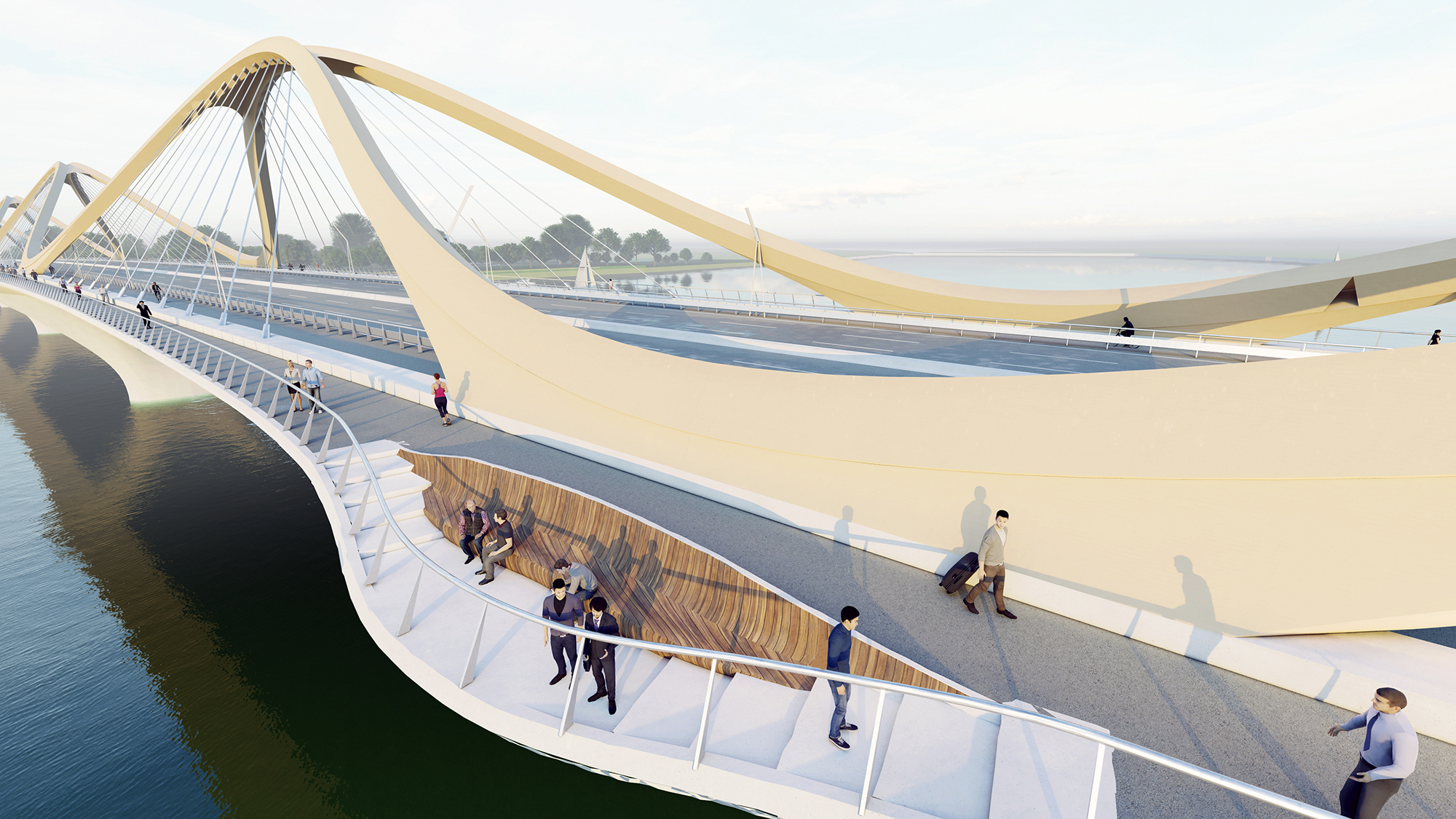
Tu Lien Bridge: The Ascending Dragons
Set to build in late 2024, the Tu Lien Bridge will connect the districts of Tay Ho and Dong Anh, linking urban areas along the Huu Hong dike with the extended National Highway 5. Spanning 2.9 kilometers, this cable-stayed bridge will feature two impressive pillars designed to resemble four dragons ascending skyward, a nod to Hanoi’s historical moniker, Thang Long, meaning “Ascending Dragon.” Its design, reminiscent of pigeons in flight over the Red River, merges strength with elegance. As one of eight new bridges, Tu Lien will alleviate traffic congestion and promote sustainable growth in northern Hanoi, emerging as a new urban and cultural landmark.
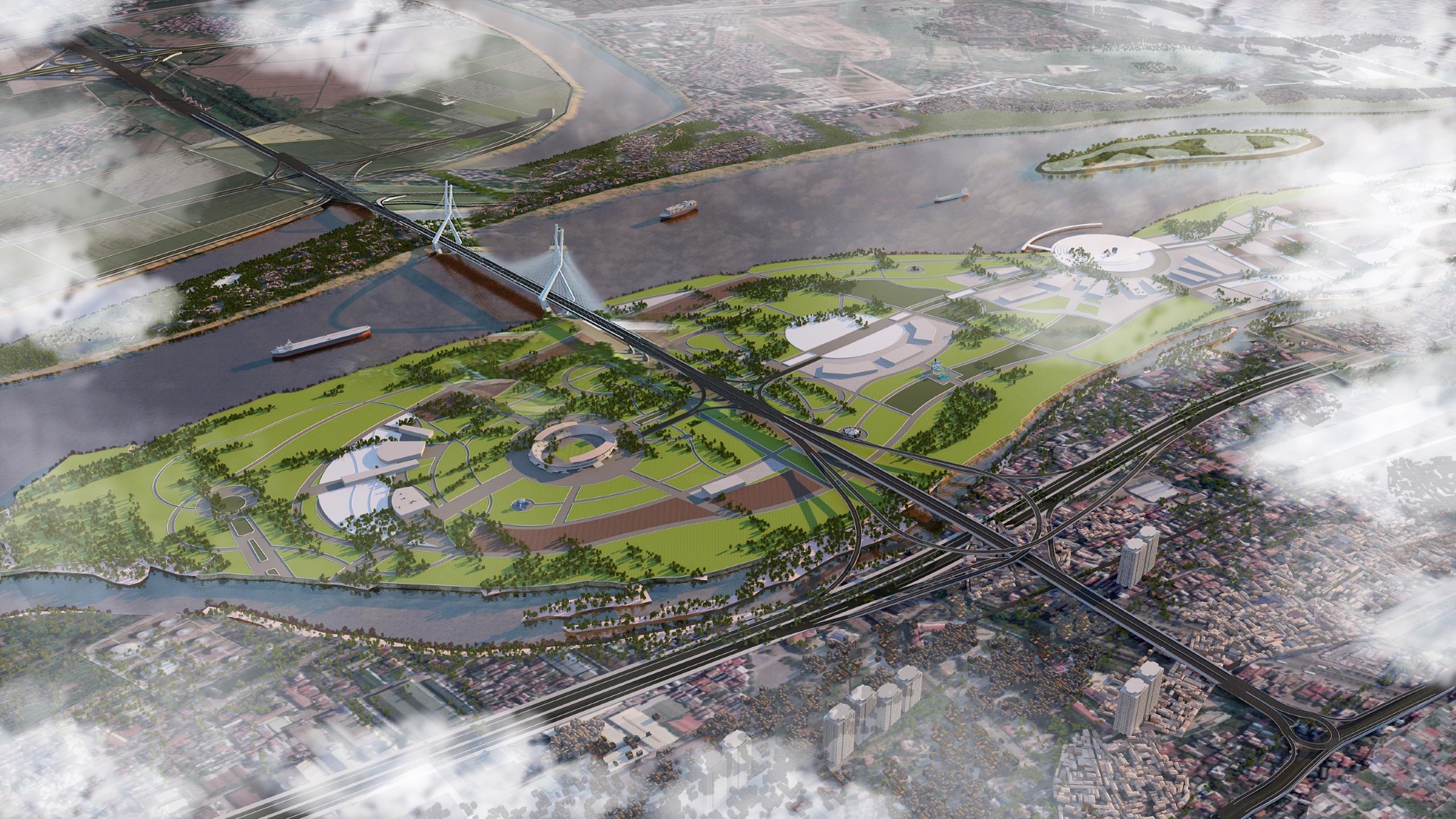
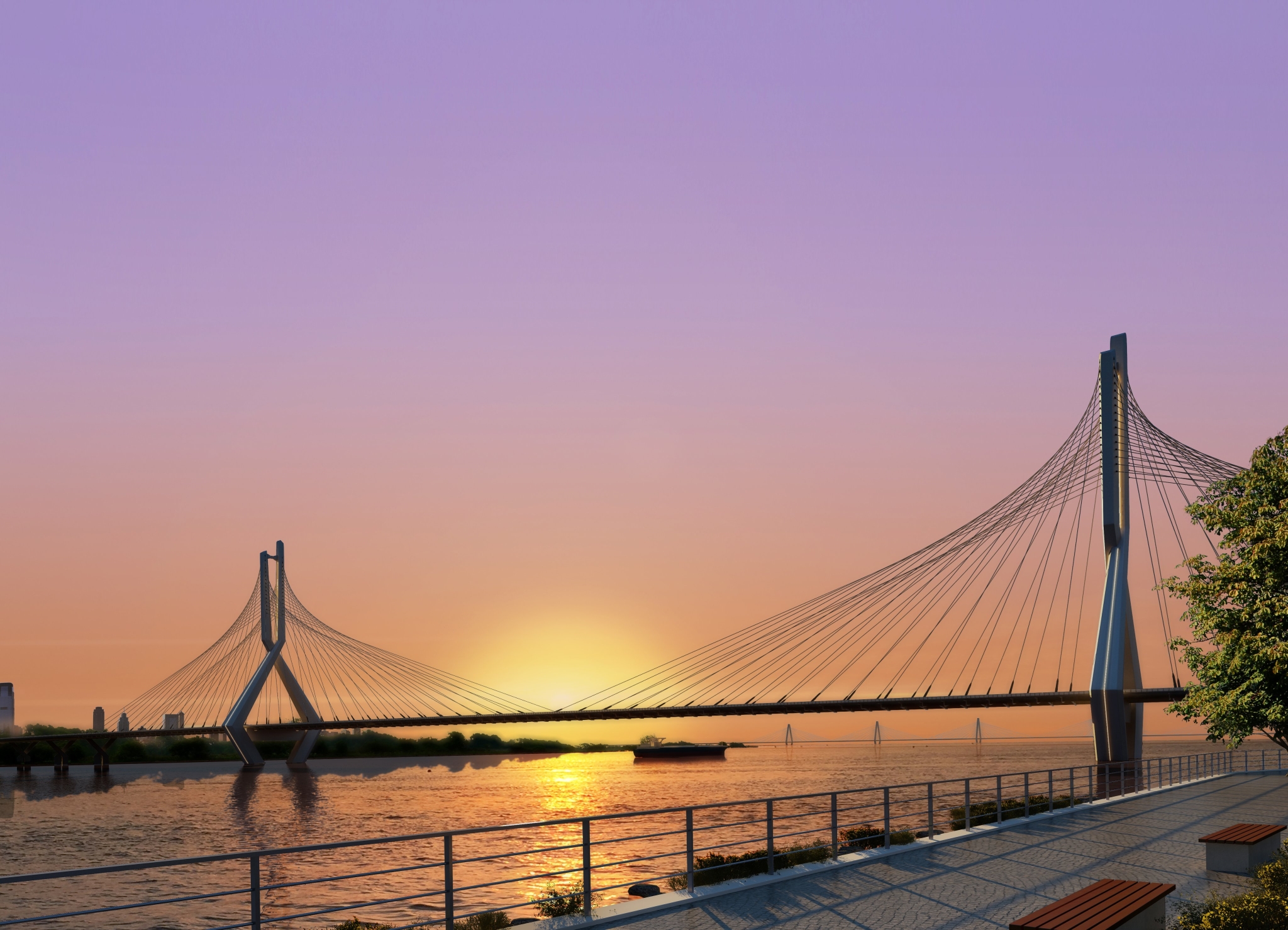
The upcoming Thuong Cat Bridge will soon join this narrative, forming a meaningful trio with Nhat Tan and Tu Lien bridges. Thuong Cat Bridge, emblematic of Hanoi’s rise, complements Nhat Tan’s symbolic five gates and Tu Lien’s spirit of unity. This triad will introduce a new rhythm to Hanoi’s bridge system, uplifting the city into a dynamic hub of connectivity.
Eastern Hanoi: A Hotbed for Real Estate Development
Hanoi’s skyline is enriching with these ambitious infrastructure projects. At the same time, the city’s real estate market is flourishing, especially in the eastern region. Eastern Hanoi is rapidly becoming the epicenter of real estate activity, drawing the attention of renowned developers such as Vingroup, Ecopark, Masterise Homes, Handico, T&T, BRG Group, and Eurowindow. The region is being invigorated by landmark projects like Vinhomes Ocean Park, Eurowindow Twin Parks Gia Lam, and Masteri Waterfront. These developments are not merely expanding the city’s housing supply but are also establishing innovative benchmarks for urban living amidst challenging market conditions.
Long Bien District, nestled north of the Red River, is unfolding as a critical traffic hub in Hanoi. Its strategic location is complemented by an extensive transportation network, encompassing National Highways 1 and 5, Hanoi – Lang Son railways, Gia Lam airport, bus stations, and multiple key bridges, including Thanh Tri, Vinh Tuy, Chuong Duong, Long Bien, Duong, Phu Dong, and Dong Tru. These infrastructural elements position Long Bien as a vital connector within the Hanoi-Hai Phong-Quang Ninh economic triangle, thereby playing a pivotal role in the region’s economic integration.
According to Industry and Trade Magazine, apartment prices in Long Bien District are soaring, with secondary market prices exceeding 40 million VND/m2. At Le Grand Jardin Sai Dong, prices range from 43 to 45 million VND/m2, while Khai Son City sees rates around 47 million VND/m2. High-end projects like Vinhomes Symphony Riverside command prices above 95 million VND/m2, comparable to new projects in the city’s inner districts.
At Vinhomes Ocean Park 1-2, apartment prices have escalated to 60 million VND/m2. For instance, a typical 66m2 two-bedroom apartment is priced at approximately 3.9 billion VND, and an 86m2 three-bedroom apartment reaches up to 5.3 billion VND. Ecopark Van Giang’s prices peaked near 80 million VND/m2, underscoring the high demand and premium positioning of these developments.
Hanoi’s urban planning strategies focus on effectively managing the population in the historic inner city, reducing it from 1.2 million in 2009 to an estimated 672,000 between 2020 and 2030. This planned reduction is expected to drive demand for housing in new developments, particularly benefiting projects in the eastern region. These projects, with their high occupancy rates, have demonstrated the successful integration of new urban living spaces and the growing preference for modern, well-connected residential areas. The city’s comprehensive plan for new bridges and the burgeoning real estate market in the eastern region are set for a significant overhaul.
The East area of Hanoi, as noted by Associate Professor Dr. Tran Dinh Thien, former Director of the Vietnam Institute of Economics, is characterized by a distinct development vision that prioritizes sustainability and equality. “If assessed frankly, eastern Hanoi will quickly accelerate to become an ideal destination on the investment map in the Hanoi real estate market. Its coordinates truly shape modern urban standards for the capital city, and more broadly, the Northern key region and the whole country”, he affirmed to the media.
